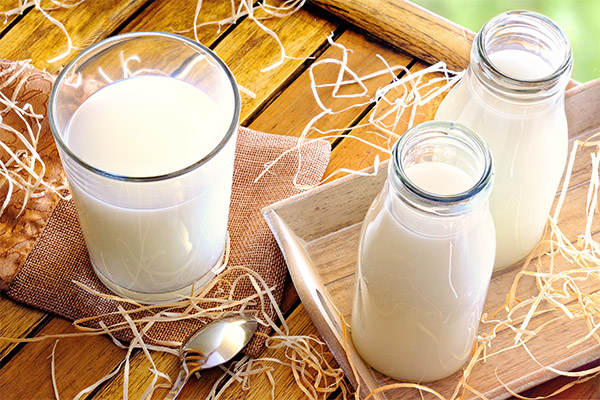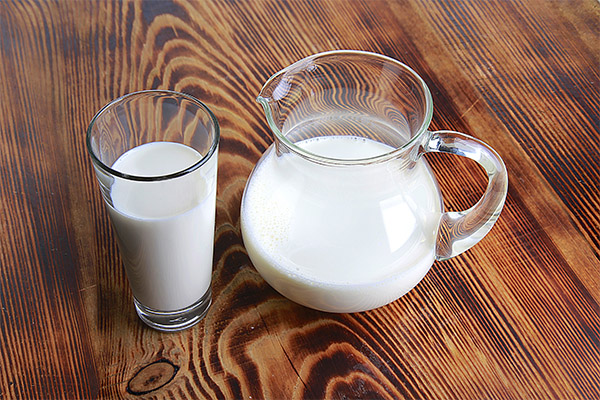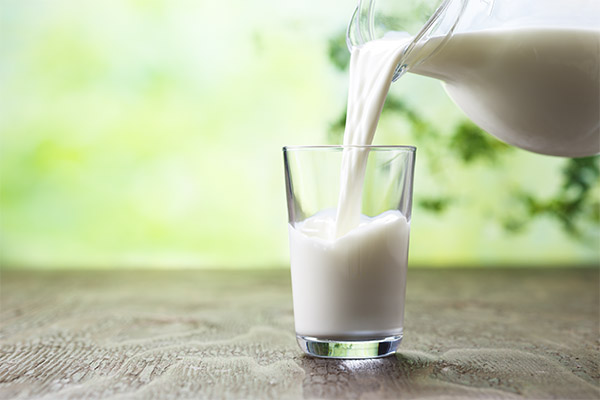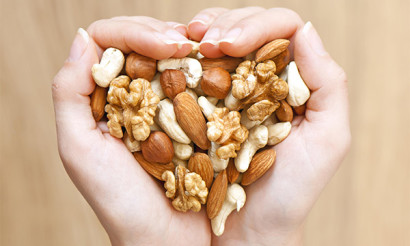How to check milk for naturalness
Today, shelves in supermarkets are “breaking” due to the abundance of dairy products. Most of the products presented are related to chemical products rather than agricultural products. How to find out the naturalness of the proposed milk? Is it possible to identify a fake at home? We learn how to determine the freshness of dairy products and correctly check their quality.
- What should be a natural product
- Types of milk
- Whole
- Normalized
- Refurbished
- Pasteurized
- Ultra-pasteurized
- Sterilized
- Ghee
- Milk intolerance
- How to determine the freshness of a product
- How to check the quality of milk at home
- Is there water in milk
- Starch Test
- Presence of chalk, soda or gypsum
- Antibiotic screening
- Test for acid and aspirin
- Fat check
- For cheese makers
- How to identify palm oil in milk
- How to determine the quality of milk powder
- How to identify natural goat milk
- Advice
We have known milk since childhood. Today, there are no problems with the choice, and by going to the store, we have the opportunity to buy any package you like. We can pay attention to the expiration date and fat content, but rarely when we look at the composition.
What should be a natural product
It is the processing of milk that subsequently affects its properties. It is enough to carefully study the information printed on the package and have an idea of the types of dairy products to make the right choice.

According to GOSTs, the following conditions are established to confirm the naturalness of milk:
- packed immediately after milking;
- does not have various additives;
- cleared of impurities;
- cooled to 4 ° C.
Such milk can only be found with farmers in their territory. It is called whole. In stores milk is sold, close to natural.
Types of milk
Milk may be:
- whole;
- melted;
- pasteurized;
- sterilized;
- fortified;
- ultra-pasteurized;
- select;
- normalized;
- restored;
- lactose free.
Consider the most common species in more detail.
Whole
This species is the closest to natural. It, like the perfect one, is rarely seen in stores. Milk undergoes minimal processing; various chemical components are not added to it to increase shelf life. Only the percentage of fat may change.
Normalized
Prepared from a whole view. Milk is separated, i.e. divided into components. The required percentage of fat content is obtained by adding cream.
Refurbished
It is rather a “milk drink”, as it is prepared from milk powder. Useful properties in it are practically absent.
Pasteurized
It is obtained as a result of heat treatment, which increases the shelf life. Heat treatment mode - 60–90 ° C. At such temperatures, harmful microorganisms die, but beneficial bacteria continue to exist.
Such milk makes delicious cereals, first courses, etc. Since this type is close to natural, it is possible to cook kefir, cottage cheese, yogurt, etc. from it at home.
Ultra-pasteurized
This type involves heat treatment at high temperatures. The mode is 126–139 ° C. The process takes a couple of seconds, but thanks to this, milk can be stored longer. Useful microorganisms do not die. The drink can be consumed without prior boiling.
Sterilized
The product is subjected to heat treatment repeatedly. Temperature is above 100 ° C. With such processes, both harmful and necessary microorganisms die, so the usefulness of sterilized milk is a big question.
But it can be stored for a long time. Bags of this type of milk can stand open in the refrigerator for a long time and will not deteriorate. But to make yogurt or cottage cheese from them will not work.
Ghee
It is obtained by treating for 3 hours at temperatures above 80 ° C (85–98 ° C).As a result, milk acquires a pleasant taste and a beautiful light cream shade.
If you add vitamins, protein and other useful components to baked milk, you get a fortified look.
Milk intolerance
Sometimes people do not tolerate milk. This often happens in children. This happens because of the lactose contained in the drink. The body does not accept dairy products, because it does not have an enzyme that can break down milk sugar. If such a person drinks even a small amount of milk, then unpleasant processes will occur in his body, diarrhea may occur, pain will appear. Therefore, this is not worth joking. If you choose milk, then you should pay attention to the composition. If there is no lactose sugar, then you can take it. Choose foods without milk sugar, they are in stores.
How to determine the freshness of a product
First of all, sour milk can be determined by the characteristic sour smell. If it is absent, but suspicions still remain, it is worth resorting to other methods of verification:
- To try. If there is no sour taste, then the product is normal.
- Check for a view. The presence of small white flakes indicates stale.
- Boil it. Take the dishes, pour a little milk into it and set to boil. When it begins to boil, see if the drink is curling or not. If it is curled, then the milk is sour.
- Add soda. Take half a glass of liquid and add half a teaspoon of regular baking soda. Follow the reaction. If the milk began to froth, then it spoiled.
- Check with drops. Milk has a certain fat content, so it is checked for freshness like this: type milk liquid on a toothpick or match and drip it onto the nail. If it does not spread, then the product is fresh.
How to check the quality of milk at home
In pursuit of the financial benefits of manufacturers and sellers, the health of the buyer is not interested, therefore, the consumer has to independently determine whether a quality product is purchased or not. The additives that are used today are quite diverse. They are introduced to increase the volume, extend the shelf life, give greater fat content to milk. At home, it is quite possible to reveal falsification. There are several simple ways to determine quality milk. But there are methods that require special reagents.

You should know! If you pour milk in a saucer and give the cat a try, then the animal will not lap up the liquid if there are any additives in it. This is a proven way to determine the quality of a milk drink.
Is there water in milk
Dilution with water is the most common way to increase volume. Check to see if milk is diluted or not.
Pour some milk into the dishes and add alcohol or vodka there. The percentage is 1 to 2. Shake well and quickly pour the resulting mixture onto a flat plate or better saucer. After 6 seconds, carefully monitor the reaction. See if flakes have formed. If they appeared immediately, then water was not added to the dairy product. If you want to know the percentage of dilution with water, then wait a while. If flakes appear:
- after 60 seconds, it means 20%:
- from 20 to 40 minutes means 40%;
- after 40 minutes it means 50%.
Worth to know! With this check, casein, which is present in the composition, is curtailed, so goat milk cannot be verified using this method. There is no casein in the goat's milk product.
Take warm water and begin to gently pour milk into it with a thin stream. If the product is diluted, then the liquids instantly merge and mix. If the milk is not diluted, the milk mixture rises.
Another verification method, for which you will need a napkin and a toothpick or a match. Put some on a match or a toothpick and drip it onto a napkin. Look at how long the stain formed around the drop will dry:
- If this is whole milk, then, firstly, the diameter of the cup itself does not practically spread, and secondly, it will dry for at least 2 hours.
- If the stain dries in an hour, then milk is diluted by 10%.
- If it contains 30% water, then the circle will dry for half an hour.
- If the milk is half diluted, then you won’t have to wait for drying for a long time: within 15-20 minutes the napkin will be dry.
Starch Test
Using starch or flour, unscrupulous manufacturers thereby thicken the dairy product and pass it off as milk with a high percentage of fat content. Check it out is easy. If you pour such a liquid into the dishes and not interfere, then all the density will go down. If the precipitate is boiled, then a paste is obtained.
The easiest way to check is with iodine. Pour milk into a separate bowl and drip iodine into it. Pay attention to the color of milk. If the liquid turns blue, then starch is added; if it turns yellow, there are no additives in the form of flour or starch.
Presence of chalk, soda or gypsum
This also happens. Adding soda, like other impurities, to dairy products allows you to increase shelf life. Such a drink is stored longer and will not be able to sour quickly.
To check, you will need vinegar, an indicator for determining acidity and a glass. You can use a test tube for the experiment. Bromthymol indicator is sold in specialized boutiques or aquarium stores. Instead of vinegar, you can use lemon juice.
Pour a little milk into a test tube or a glass and add half a teaspoon of vinegar. If the hissing reaction has begun and bubbles have formed - it means that there is soda, gypsum and chalk in the milk.
Pour milk into a test tube or a glass, add 6 drops of the acquired indicator on the wall. If the color changes to dark green, then soda is added to the milk.
Antibiotic screening
The addition of antibacterial drugs to dairy products slows the growth and reproduction of pathogenic bacteria, which increases shelf life. To find out if antibiotics are present or not in milk, you can use the fermentation method. Pour milk into a glass and add sour cream or kefir.
Leave for a day in the room. If the product is normal, then it will ferment and turn into yogurt. If the reaction does not occur, then the antibiotic present in the milk inhibits the sourdough.
Test for acid and aspirin
Some manufacturers add acids like boric or acetylsalicylic acid to dairy products to increase the shelf life, and aspirin to preserve freshness. This can seriously affect human health, such a drink is especially dangerous for people prone to allergic reactions to aspirin. An ordinary litmus test will help to detect the presence of acid. Dip it in a liquid and look at the color. If it turned red, then the listed additives were added to milk.
You can check for impurities with nitric acid. Pour a little milk mixture into the dishes and drip a few drops of the reagent. Look at the color. If the milk began to turn yellow and turned orange, then the product is not natural.
Fat check
To determine if there is fat in the milk or not, take a couple of glasses and start pouring the liquid. Look at the walls of the dishes. If there are no stains, then milk is fat, if milk is diluted, then the liquid will spread across the surface.
To determine the percentage of fat, we need a tape measure or a regular ruler. We take glassware (glass), measure with a 10 cm ruler and fix it. Pour milk to the mark and leave it warm for 10 hours. After time, evaluate the result. Cream should be formed on top, the layer height of which we will measure. To do this, use the ruler. The calculation is as follows: 1 to 1. That is, the percentage of fat content is 1 mm of the height of the cream. If the layer height is 3, then the percentage of milk fat is 3.
For cheese makers
Testing milk to determine the level of acidity is of interest to people who are engaged in the manufacture of cheese. For testing, ready-made test samples are used, but you can conduct a test yourself at home and find out the acidity indicator. For this we need distilled water, caustic soda and phenolphthalein.
- Pour exactly 10 ml of milk product into the test tube.
- Add distilled water (20 ml) and phenolphthalein (3 drops).
- Gradually we begin to inject sodium hydroxide until the contents of the test tube turn a pale pink color. 0.1 should be added.
- We consider how much sodium hydroxide was consumed in ml, and multiply it by 10. We get the acidity of milk.
For reference! Acidity is measured by special parting and is indicated in Turners. The norm for aircraft and grades I will be 16–18 T, for II - 18–20 T, for non-graded - 21 T.
How to identify palm oil in milk
Palm oil is a vegetable fat derived from palm fruits. It has a number of useful properties that it possesses. For example, it contains enough vitamin E needed by a woman. But it also contains substances that have a harmful effect on health, especially when the body receives it in large quantities. Therefore, consumption in moderation cannot cause danger or any side effects in the body. But some people consider it a particularly harmful supplement and try to exclude palm oil from the diet.

The addition of palm oil improves the taste of dairy products and extends shelf life. It is impossible to identify it in milk at home. This can only be done in special laboratories with the necessary tools and equipment. To identify vegetable fats, gas chromatography is performed, which cannot be done at home. Therefore, it remains only to carefully study the printed information on the packaging and choose a reliable manufacturer.
You should know! Excessive and frequent consumption of palm oil leads to vascular problems. It is difficult to remove from the body.
How to determine the quality of milk powder
There are several criteria for evaluating milk powder:
- Colour. It should be a white powder with a light cream tint. Bright brown and other colorful elements should not be present. Their presence in the powder may indicate an incorrect cooking process. Perhaps, when cooking, milk was burnt, so the taste of the finished powder will be bitter or have an unpleasant aftertaste.
- When diluting milk powder, no lumps should form. The fluid should be homogeneous. If the lumps are in powder, then they can be easily kneaded by hand, they should crumble. If there are large and dense “clods”, then storage was incorrect. Most likely, the product was stored in a room with high humidity, which is unacceptable.
- If the product is caked, then it is not worth taking, as its taste will be bitter. Usually, milk powder “suffocates” when stored in polyethylene.
- There should be no precipitation. When breeding, clots should not form at the bottom. If this happens, then milk cannot be eaten. This indicates poor quality. There is practically no protein in it, only animals can be fed with such a product. For people, such milk powder is not suitable.
- Smell. A quality product has the smell of boiled milk, and its taste should be milk. A slight aftertaste is allowed.
How to identify natural goat milk
The benefits of goat's milk are no less than cow's. It contains many vitamins, protein, trace elements and minerals. The presence of active substances destroys harmful microbes, and it is stored longer. And in color and smell, it’s almost impossible to distinguish a goat from a cow.

Worth to know! It has been proven that goat milk reduces acidity, helps people with tuberculosis, and does not allow stomach ulcers to develop.
To determine the quality goat milk, you must follow the rules when buying:
- Check packaging integrity.
- Choose a reliable manufacturer.
- Give preference to a white product with a slight light smack of cream, without fat clots.
If milk has a yellowish tint, then this is a sign that it was diluted with cow or replaced.
If there is a bluish tint, it means that it was stored incorrectly, or it was diluted with water. Mastitis in goats may also be the cause of the blue hue. If the milk has an unpleasant odor, then it was stored in an inappropriate place.
If the product is bought in packaging, pay attention to the composition written on the container. Make sure it's milk, not a drink. Check expiration dates.
If you buy in the market, then pay attention to color. It should be white and have no shades. See in which container the product is stored. Ask the seller to give a try. The taste of goat milk and its smell resembles cream. You can try to drip the liquid on the nail and see if the drop will spread or not. If not, then everything is in order, you can safely buy.
If you already bought milk and want to check, then try to freeze it. After freezing, goat milk will remain fresh, without impurities, unlike cow's milk. In the latter, after freezing, milk will resemble porridge.
You can conduct an experiment. Take a small amount of milk purchased and freeze. If after defrosting it has a uniform composition, then everything is honest - you have been sold goat milk. If various particles float after thawing in a liquid, then you were deceived and replaced with a cow or diluted with it.
People with allergies to cow protein should be especially careful.
Advice
Do not forget to check the shelf life and carefully study the composition. Remember that you can’t store milk for a long time, and it’s not worth dreaming that there is a natural product in the supermarket. It is better to choose manufacturers that are close to your place of residence. Then there is a chance that the composition of milk is close to natural and it will be fresh.
Do not store open packaging with milk next to pungent foods such as fish, smoked meat, etc. Milk quickly absorbs the smell and becomes not tasty.
Conclusion
Now we know how to get around the hype and check the freshness of milk and the quality of the product on our own at home. Having some ideas about the types and assortment in supermarkets or convenience stores, you can correctly evaluate and make the right choice. And knowing for what purpose a product is being bought, you can quickly navigate and buy exactly what is needed. Be healthy!
«Important: all information on the site is provided exclusively in fact-finding purposes. Before applying any recommendations, consult with a profile specialist. Neither the editors nor the authors are liable for any possible harm caused materials. "















